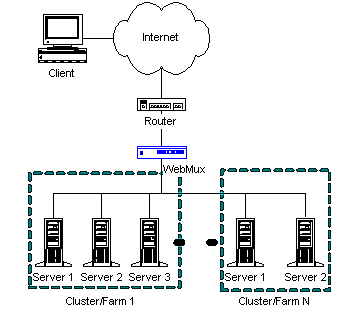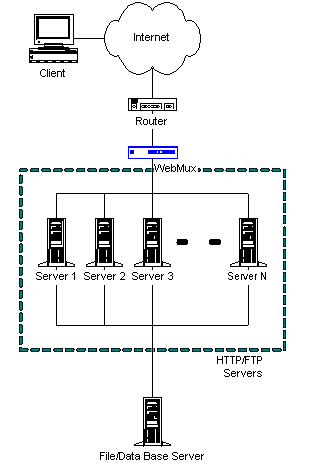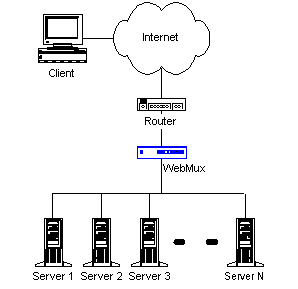Introduction
Web hosting for a large number of customers is a challenge with a
number of trade-offs. Different sites has different requirements on
performance and cost. WebMux is flexible to fit in different environments.
Case I
The customer's sites are
mission critical. Server cluster with data replication is employed.
We called each cluster a Farm.

In this case, the servers
within the cluster act as web and FTP servers with the contents
resides in the same server. The WebMux is balancing the load among
the server. When customers updating their web site to one of the
server, the cluster OS will replicate the changes to all the servers
within the cluster. Although some cluster OS also provides the load
balancing functions, using WebMux often simplifies the
configuration, increases the reliability and enhance the
performance.
Case II
Server clusters can be
costly and complex. An alternative method is to employ a number of
server as web or FTP server but redirecting the contents to a
single fault tolerant file server.

Performance is gained
because normal web or FTP operations consists of handling the
HTTP/FTP requests and fetching the actual pages or files. Handling
the HTTP/FTP requests demands many times more on system resources
than fetching or writing files.
The WebMux is used here to
balancing the load and monitoring the web and FTP servers.
Case III
Not all web or FTP sites
are necessary mission critical. For many applications, slower
performance, even short period of down time may be acceptable. The
problem is how to know a server is down within a timely manner
without having the customers to call in with complaints. The WebMux
can plays an important role here.

A WebMux can be setup to
monitor hundreds of web or FTP servers with different contents on
them. Although no load balancing or fault tolerant is provided, the
WebMux can page the system administrator immediately when any server
went down. Actions can be taken and the server back on-line before
the customers notice the problem.